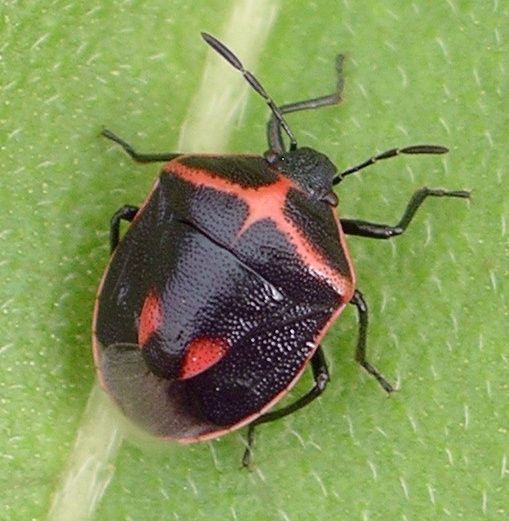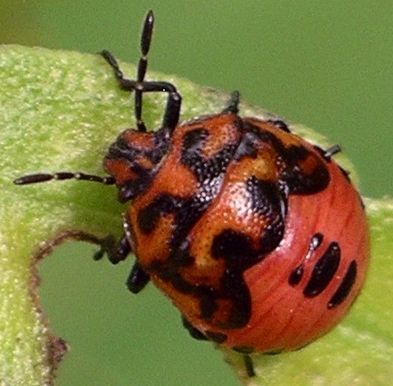 |
|
Cosmopepla Stål, 1867
|
|
Cosmopepla Stål, 1867: 525. Type Species: Cimex carnifex Fabricius, 1798 (= Cosmopepla lintneriana Kirkaldy, 1909), by subsequent designation (Kirkaldy, 1909). Tribal Placement:
Included Species: |
Comments: Cosmopepla was recently revised, including a key to all species, by McDonald (1986). The most commonly encountered species has been called C. bimaculata by most workers, but its original combination (Pentatoma bimaculata) is preoccupied; the correct name for this common North American species is C. lintneriana.
Key to Species of Cosmopepla (modified from McDonald, 1988)
|
1 Overall coloration greyish, brownish, or orange-brown with markings in black or orange |
2 |
|
- Overall coloration black or metallic blue-black with yellow, orange, or red markings |
3 |
|
2(1) Reddish brown with a distinct irregular transhumeral orange band (western U.S.) |
uhleri Montandon |
|
- Reddish to grayish brown species with dark punctuations; lacking orange transhumeral band (western U.S.) |
intergressa (Uhler) |
|
3(1) Scutellum with two distinct marginal red spots, near apex of frena on each side (Canada, U.S., Mexico) |
lintneriana Kirkaldy |
|
- Scutellum lacking red spots near apex of frena, tip of scutellum may be thinly margined with yellow or orange |
4 |
|
4(3) Pronotum with yellow transhumeral band bisected by medial longitudinal yellow stripe, forming distinct cross (Colombia, Ecuador) |
cruciaria Stål |
|
- Pronotum usually with yellow to red transhumeral band, but lacking longitudinal medial stripe, not forming cross |
5 |
|
5(4) Transhumeral band irregular, with two small black macules either close together or more widely spaced |
6 |
|
- Transhumeral band arcuate, uniform, lacking black macules |
7 |
|
|
|
|
6(5) The two small black macules in transhumeral band placed relatively close together |
binotata Distant |
|
- The two small black macules in transhumeral band placed relatively far apart (Idaho, Colorado, Utah, Montana, California, Oregon, Washington, Vancouver Island, Baja California) |
conspicillaris (Dallas) |
|
|
|
|
7(5) Frenum not quite one-third length of the scutellum; shape of body broadly oval; male paramere with a distinct apical thumb-like process; female basal plates subtriangular in shape, contiguous mesially (Texas to Colombia) |
coeruleata Montandon |
|
- Frenum reaching almost one-half length of scutellum; body generally longer and more tapering; male paramere lacking apical process; female basal plates more lobate, apical margin expanded posteriorly, mesial margins contiguous only basally (sw. U.S. to Venezuela) |
decorata (Hahn) |
|
|
David A. Rider
Professor of Entomology
North Dakota State University
E-Mail:
David.Rider@ndsu.edu
Published by the
Department of
Entomology
Prospective students may schedule a visit by calling 1-800-488-NDSU.

